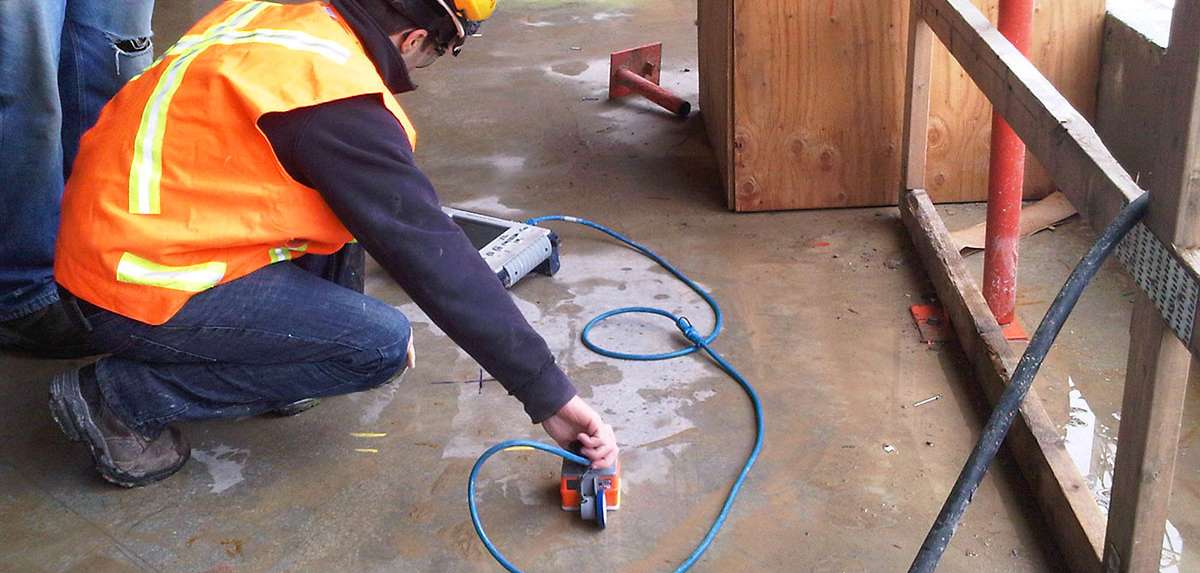Effective Concrete Scanning Techniques for Construction Projects
Effective Concrete Scanning Techniques for Construction Projects
Blog Article
Elevate Your Building Process With the Strategic Insights of Concrete Scanning for Enhanced Performance
One such technology that has actually changed the construction sector is concrete scanning. By harnessing the critical understandings offered by concrete scanning, construction professionals can unlock a realm of improved performance and streamlined processes.

Advantages of Concrete Scanning
Enhancing task efficiency and security, concrete scanning uses a non-destructive technique for discovering hidden objects within concrete structures. By utilizing modern technologies such as ground-penetrating radar (GPR) and concrete x-ray imaging, construction groups can accurately situate rebar, post-tension wires, electric avenues, and various other obstructions prior to boring, reducing, or coring right into concrete.
The advantages of concrete scanning are various. Building sites can be intricate settings, and knowing what lies below the surface area can prevent mishaps and injuries.
Additionally, concrete scanning advertises general task performance by streamlining workflows and preventing rework. By identifying possible issues early on, teams can readjust their plans proactively, saving time and resources in the future. Basically, the fostering of concrete scanning innovations is a tactical financial investment that pays dividends in terms of cost-effectiveness, efficiency, and safety.
Innovation Integration for Performance
Concrete scanning's capacity to improve operations and enhance job performance can be additional maximized via tactical integration of cutting-edge modern technologies. By integrating Structure Details Modeling (BIM) software program right into concrete scanning processes, building teams can achieve a greater degree of precision and sychronisation. In addition, the assimilation of Increased Truth (AR) technology with concrete scanning can boost on-site visualization, allowing project managers and workers to overlay digital info onto the physical setting in real time.
Preventing Costly Mistakes
How can precise attention to detail throughout concrete scanning processes help construction groups in preventing expensive mistakes? Concrete scanning plays a crucial function in identifying prospective problems prior to they escalate right into expensive mistakes. By using advanced scanning modern technologies such as Ground Permeating Radar (GPR) and electromagnetic induction, building groups can precisely spot rebar, utilities, gaps, and various other blockages within concrete frameworks. This degree of accuracy allows job managers to make informed choices pertaining to the design and design of their construction strategies, lowering the risk of unintended damage to essential facilities throughout the structure process. In addition, concrete scanning helps in making sure structural integrity by recognizing weaknesses or defects in the concrete beforehand, enabling for timely fixings and alterations. By proactively attending to these issues, building and construction groups can stay clear of expensive errors such as rework, hold-ups, or safety and security dangers that might develop from ignored discrepancies in the concrete framework. Ultimately, purchasing complete concrete scanning procedures verifies to be an economical technique in the future, saving both time and resources while boosting total job efficiency and high quality.
Enhancing Job Monitoring
Thorough attention to detail during concrete scanning refines not just helps in preventing pricey mistakes but also lays a solid structure for efficient job monitoring in building and construction ventures. By integrating concrete scanning technology into job administration methods, building and construction teams can streamline workflows, enhance communication, and ensure that projects stay on track.
Concrete scanning provides beneficial understandings right into the architectural honesty of existing components, allowing project managers to make educated choices regarding layout alterations or building and construction series. This proactive strategy minimizes the risk of unexpected hold-ups or revamp, eventually conserving time and sources. Furthermore, the information obtained from concrete scanning can be integrated into Structure Information Modeling (BIM) platforms, enabling real-time cooperation and coordination among numerous stakeholders.
In addition, concrete scanning aids job managers recognize possible risks or obstacles prior to they intensify into larger problems, advertising a safer workplace for all involved. With a knockout post enhanced visibility and accuracy provided by concrete scanning technology, task supervisors can effectively prepare, keep an eye on, and implement construction tasks with greater performance and self-confidence.
Optimizing Efficiency
One essential facet of optimizing productivity is with the adoption of concrete scanning technology. By making use of ground-penetrating radar (GPR) and other scanning approaches, construction teams can properly situate rebar, channels, and other subsurface elements, minimizing the threat of expensive errors and delays during excavation and drilling.
In addition, welcoming Structure Details Modeling (BIM) software can dramatically enhance efficiency by creating thorough 3D designs that enhance job visualization and coordination among various trades. BIM permits much better clash detection, making it possible for concerns to be recognized and solved prior to building and construction also begins, saving time and sources in the lengthy run.
Applying a lean building and construction approach, which focuses on removing waste and maximizing efficiency across all job phases, is one more reliable technique for optimizing productivity. By promoting cooperation, interaction, and constant enhancement, building teams can function much more cohesively in the direction of accomplishing project objectives in a streamlined and effective fashion.
Verdict
To conclude, the critical application of concrete scanning in the building and construction process supplies various advantages, including boosted performance, expense savings, enhanced project administration, and enhanced performance. By integrating this innovation, building teams can avoid pricey mistakes, streamline their procedures, and maximize their total task result. Concrete scanning is a useful tool that can boost the construction procedure and bring about even more successful and effective end results.

Report this page